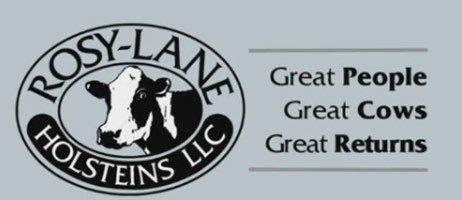Rosy-Lane Holsteins’ Goal— “Get Cows to Last”
Rosy-Lane Holsteins’ Goal— “Get Cows to Last”

At the KY Dairy Partners meeting, Lloyd Holterman, co-owner of Rosy-Lane Holsteins of Watertown and Paoli, Wisconsin shared his philosophy on breeding his herd of cows and how he uses genomics to better manage his herd. Mr. Holterman’s goal for his breeding and overall management program is “to get cows that last”. He stated that his 5th lactation cows have the highest production and thus are some of the most profitable cows in his herd. The more, older cows (5+ lactation) retained, the better! He wants to prevent culling first lactation heifers since they represent a loss of at least $1000. He strives to pick sires that have positive health traits (DWP$), produce pounds of fat and protein (he’s in a cheese market), and result in cows rebreeding (daughter pregnancy rate-DPR). He believes that breeding for disease wellness traits along with management changes has helped him decrease culling. Currently, his herd culling rate is 24% and he has set a goal of getting to 20%.
I enjoyed listening to how he developed and implemented his breeding and selection programs. But, I was more taken and appreciative of his underlying business management skills that he indirectly discussed with the attendees. These components included the following:
Set goals each year and implement a plan.
These goals should be written down, be specific, and target a maximum of 2 to 3 areas. Once he identified what he wanted to work on, he implemented a plan to work towards his goal. These goals included not only production-related goals, but also incidence of a number of transition cow diseases and overall vet cost. He wanted to have a vet cost under $0.30/cwt, a third of the cost reported in the Southeast by the first speaker of the conference. To achieve this goal, they did some of their vet work in house, such as ultrasound for pregnancy diagnosis and foot trimming, as well as decreasing the incidence of a number of transition-cow diseases to very low levels. Mr. Holterman showed the goals he had selected and his progress toward these goals. Rosy-Lane Holsteins averages 31,314 lbs of milk SHIPPED per cow (take note of the word shipped) and 7.07 lbs of fat and protein marketed daily per cow.
Measure progress toward your goal and it’s financial implications.
Progress toward his goals was measured not only for the current year, but also over time. He showed graphs illustrating his herd’s genetic progress over the past 10+ years. He then asked the most important question, “did the investment pay” and calculated whether it had indeed paid or worked as planned.
Identify #1 factor impacting your profitability.
For Mr. Holderman, the #1 area he identified as having an impact on profitability for his herd was related to controlling and minimizing culling. Cows that exit the herd too young do not pay back their rearing costs and do not make as much profit as older cows. Cows that die take away from the bottom line. Also, by reducing culling, less replacements are needed; thus reducing overall heifer rearing costs. He calculated what he called, net herd replacement cost. Net herd replacement cost on a cwt of milk sold basis is equal to the number cows removed times the balance sheet value of a springer minus all cow sales, and then dividing this amount by the number of cwt of milk sold per year. Notice that he used “amount of milk sold”, not amount of milk produced. His calculated culling cost per cwt of milk shipped was $0.77/cwt and his best year to date; $1.20 less than the highest herd in a peer-group of dairy farms he is a member.
Integration of cattle management and financial aspects of the operation.
Throughout Mr. Holderman’s presentation, he gave examples of how he repeatedly looked at the economics of various aspects related to the management of the cows and heifers and the overall economic implication to his dairy business. He always talked about looking to the future and how he could improve the operation. I think his farm logo best sums up this approach to managing cows, people, and the business side of a successful dairy business. Rosy-Lane Holsteins LLC: Great People, Great Cows, Great Returns!

Author: Donna M. Amaral-Phillips
